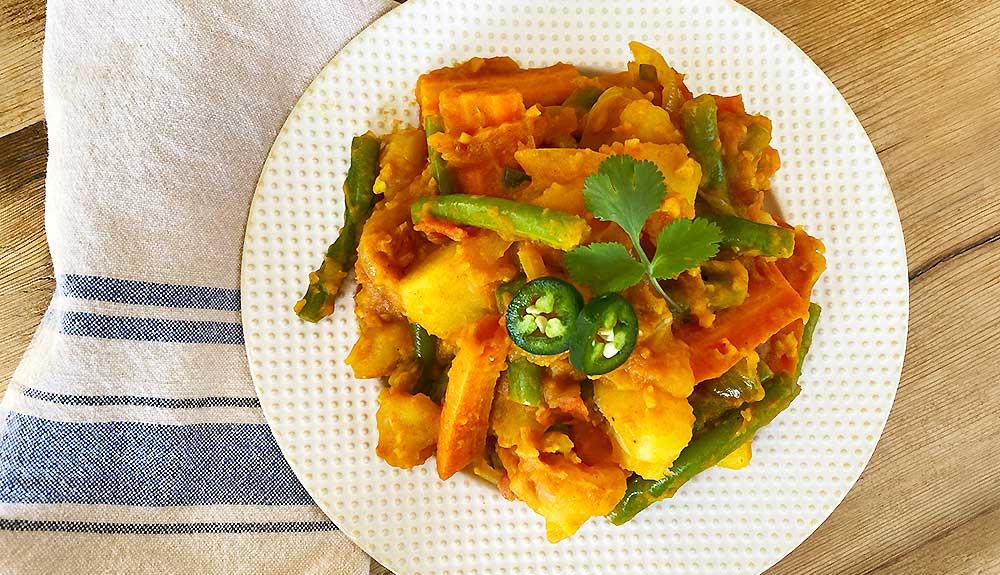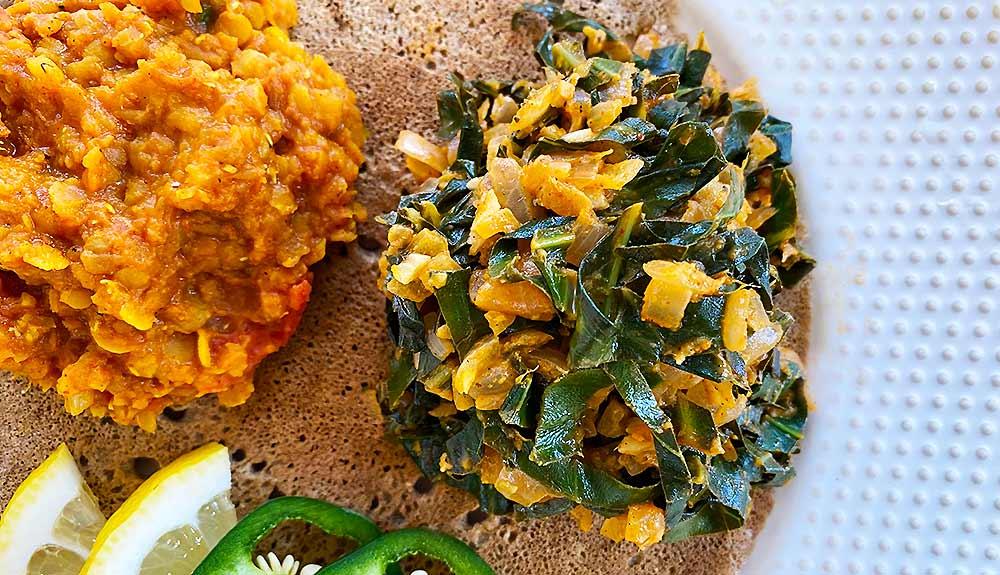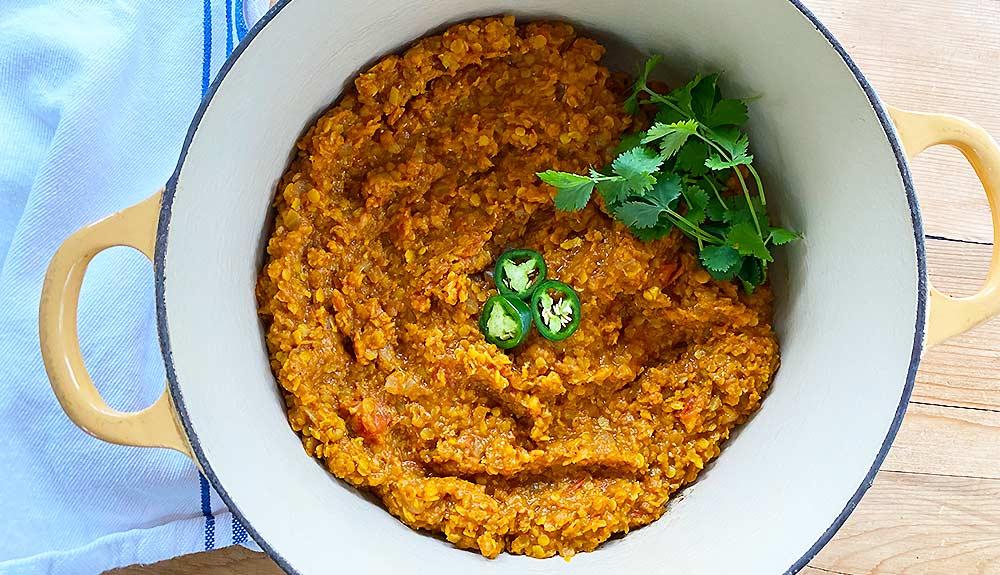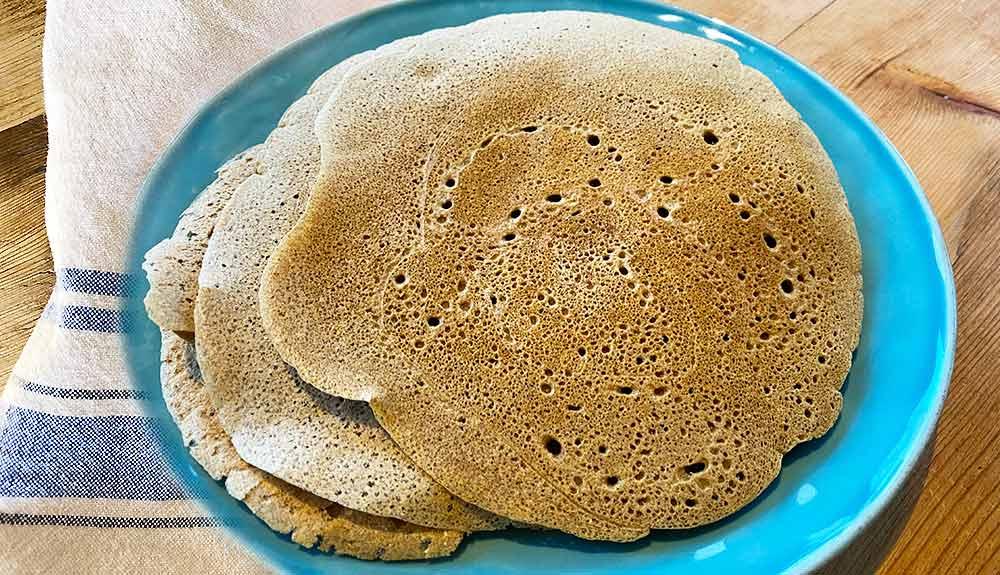We are on a mission to eat our way around the globe ?, and we’re taking you with us!
There are so many exciting international cuisines to choose from, and this week, we’re heading to East Africa to experience the delicious flavors and customs of Ethiopia!
If you are not familiar with Ethiopian food, you are in for a treat. You may need to step outside of your comfort zone a bit to experience one of the most exciting cuisines in the world!
Not only is Ethiopian food extremely flavorful, but it is designed to be shared and eaten with friends and family. It’s served on a large, single platter which is placed in the center of the table. No utensils are needed—you eat with your hands, scooping up bits of veggies and stews with injera, a spongy, pancake-like bread, while sharing this amazing food with everyone at the table.
There is a practice in Ethiopia called gursha and this is where people feed each other bites of food. It is viewed as a very loving thing to do for someone. You’ll see loved ones tearing off pieces of injera, scooping up the bites of delicious stew, and feeding it to each other. How sweet! This just has to be one of the greatest culinary customs that still exists today. Try it with your family and friends and see how this makes you feel ❤️
This week, we present you with our Ethiopian Feast!
Ethiopian Vegetable Stew (Yataklete Kilkil), Ethiopian Collard Greens (Gomen), Ethiopian Red Lentils (Misir Wat) and Injera!
|
|
|
|
Ethiopian Vegetable Stew (Yataklete Kilkil) |
|
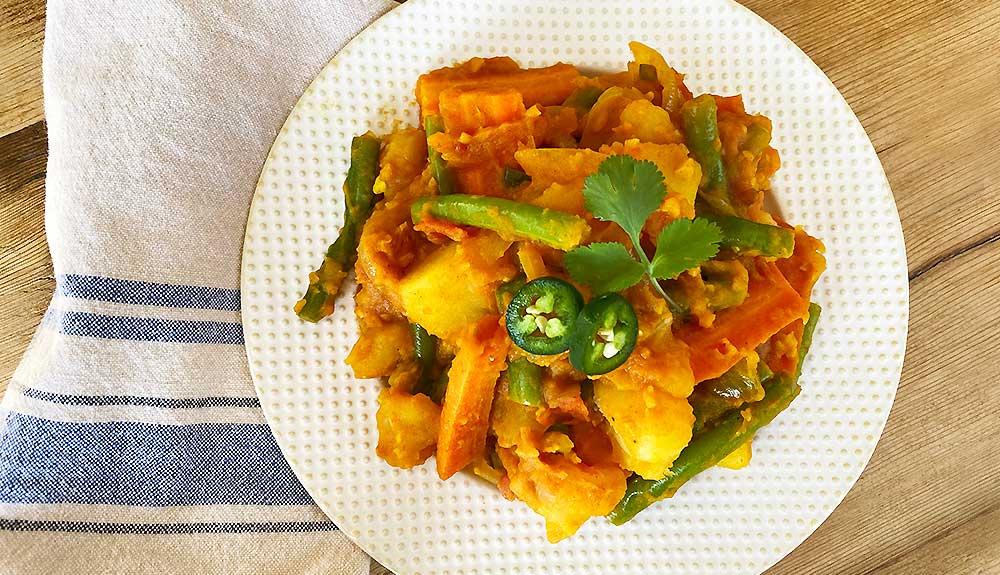 |
|
|
|
|
| Ethiopian Collard Greens (Gomen) Collard greens make a frequent appearance at tables throughout Africa, but in Ethiopia, collard greens or “gomen” are a staple. The gomen is slow-cooked with onions, garlic, ginger and tomatoes, and clarified butter or “niter kibbeh” is added to give it a creamy savoriness. In our version of gomen, we replace the butter with creamy coconut milk and add all of the right spices. We also add a touch of lemon juice to these delicious flavors pop! We serve our gomen the Ethiopian way—as one many side dishes of veggies and stews, such as our Ethiopian Red Lentils, along with our Injera, a delicious, spongy, pancake-like Ethiopian bread that we actually use as a utensil to scoop everything up with. Delicious! |
|
|
|
|
|
|
|
| Ethiopian Red Lentils (Misir Wat) Misir Wat is a traditional Ethiopian red lentil dish that is nice and thick—somewhat like a red lentil soup that has thickened up so much that a spoon is not necessary. We simmer red lentils with tomatoes, onions and garlic until they are tender, creamy and amazingly delicious. We add berbere spice which is an Ethi0pian spice blend made with onions, garlic, chiles, cinnamon, ginger and nutmeg, and it gives our Misir Wat the warm and spicy (not too hot) flavors we love about Ethiopian food. Be sure to serve your Misir Wat with our Injera—Ethiopian bread—which you’ll use as a utensil to scoop it up with. So easy to make and super delicious! |
|
|
|
|
|
|
|
| Injera In Ethiopia, and in Ethiopian restaurants all over the world, it’s customary to eat meals with your hands. How can this be? At every meal, Injera is served and it is used as a utensil. Injera is a soft, flat, spongy bread, which has a tangy, almost sour taste–think sourdough. Traditionally, the Injera batter ferments for days before the bread is made, to really develop a sour flavor. But, we use vinegar and sparkling water to really speed things up, and to keep it simple. The flavor and texture of Injera is delicious paired with the wots that are served at Ethiopian meals. Wots are mixtures of vegetables, lentils, and stews, and are served on a giant platter with the Injera covering the entire bottom. Just tear off a piece of Injera, scoop up some wot, and put it directly into your mouth. How fun is that? If you’re making an Ethiopian meal, our Injera is a must! |
|
|
|
|
|
|
|
|

